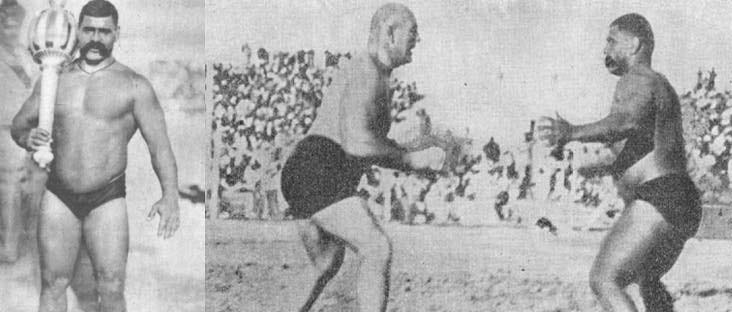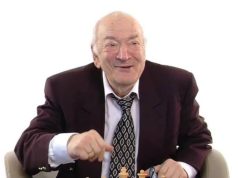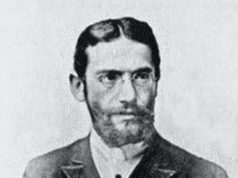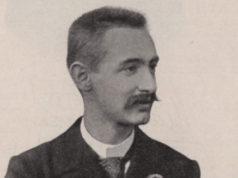He was definitely Rustam-e-Hind but he was also Rustam-e-Zamana. The ‘Champion of the Universe’, Gama Pehalwan had left a legacy; a legacy that is firmly prevalent even 58 years after his death. With an undefeated career spanning over five decades, The Great Gama remains the greatest Indian wrestler of all times who achieved legendary status in pre-independent India and regarded as an icon of the post-independent milieu.
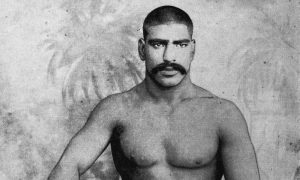 Born in village Jabbowal of Amritsar in 1878, Ghulam Mohammad Baksh belonged to an ethnic family of Kashmiri wrestlers. His father Muhammad Aziz Baksh was a renowned wrestler, but died when Ghulam was only six years old. He was then put under the care of his maternal grandfather Nun Pehalwan where he learnt wrestling lessons from his uncle.
Born in village Jabbowal of Amritsar in 1878, Ghulam Mohammad Baksh belonged to an ethnic family of Kashmiri wrestlers. His father Muhammad Aziz Baksh was a renowned wrestler, but died when Ghulam was only six years old. He was then put under the care of his maternal grandfather Nun Pehalwan where he learnt wrestling lessons from his uncle.
Ghulam’s winning streak started from the age of 10, the first being in a Strongman competition held in Jodhpur in 1888. The contest that had popular heavyweight wrestlers, turned to be a happy hunting ground for Ghulam. He wrestled his way to the last fifteen and though he could not make to the finals, he was named a winner by the Maharaja of Jodhpur because of his tender age.
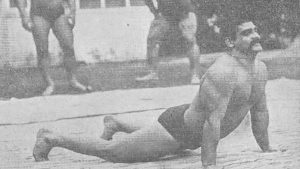 Next, Ghulam won several domestic tournaments. His outstanding wrestling capabilities since his young age was the talk of town as much as his diet and training. Ghulam used to do a minimum of five thousand squats and three thousand push-ups during his daily training. He had some unique exercises that later was followed by none other than Bruce Lee. Anecdotes say that Bruce Lee was an avid follower of Gama’s training routine and read about him passionately. Lee incorporated several of his tricks in his own training exercises.
Next, Ghulam won several domestic tournaments. His outstanding wrestling capabilities since his young age was the talk of town as much as his diet and training. Ghulam used to do a minimum of five thousand squats and three thousand push-ups during his daily training. He had some unique exercises that later was followed by none other than Bruce Lee. Anecdotes say that Bruce Lee was an avid follower of Gama’s training routine and read about him passionately. Lee incorporated several of his tricks in his own training exercises.
The name of Ghulam Mohammad Baksh spread to corners of the undivided nation. His story of prowess reached to the Maharaja of Datia who in turn adopted him in his court to give him wrestling training. Under Maharaja’s able guidance, Ghulam honed his skills further and continued his exploits. It was around this time that Ghulam Mohammad Baksh was rechristened as Gama Pehalwan.
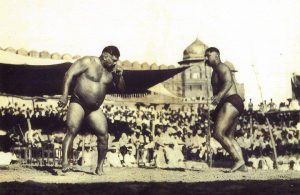 Gama’s first major bout came in 1895 when he was up against the then-Indian Wrestling Champion Raheem Bakhsh Sultani Wala. Gama was no match to Raheem Baksh who was 7 feet tall in comparison to Gama, who was only 5 feet 7 inch. But 17-year old Gama rode on his youthful agility against middle-aged Raheem Baksh. The bout continued for hours and finally ended in a draw.
Gama’s first major bout came in 1895 when he was up against the then-Indian Wrestling Champion Raheem Bakhsh Sultani Wala. Gama was no match to Raheem Baksh who was 7 feet tall in comparison to Gama, who was only 5 feet 7 inch. But 17-year old Gama rode on his youthful agility against middle-aged Raheem Baksh. The bout continued for hours and finally ended in a draw.
After his match with Raheem Baksh, there was no looking back for Gama Pehalwan. By 1910, he had defeated all the prominent Indian wrestlers and was considered as the best at that time. The great Indian wrestler Gama Pehalwan was ready to conquer the world then.
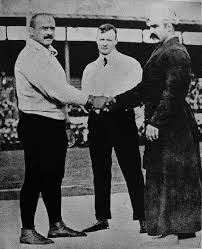 Accompanied by his younger brother Imam Bakhsh, Gama sailed to England to fight against international wrestlers. But citing his height issue, the organizers denied his entry into the ongoing tournament. Gama took this rejection as a heavy blow to his Indian belief and like a true patriot challenged the colonial power by declaring that he could throw any three wrestlers of any weight class in thirty minutes.
Accompanied by his younger brother Imam Bakhsh, Gama sailed to England to fight against international wrestlers. But citing his height issue, the organizers denied his entry into the ongoing tournament. Gama took this rejection as a heavy blow to his Indian belief and like a true patriot challenged the colonial power by declaring that he could throw any three wrestlers of any weight class in thirty minutes.
The first professional wrestler to take his challenge was the American Benjamin Roller. In the first bout against Roller, Gama defeated him in 1 minute 40 seconds and in the second bout he took 9 minutes 10 seconds to finish off. On the second day, he defeated 12 wrestlers and thus gained entry to the official tournament.
On 10th September 1910, Indian Gama Pehalwan was pitted against the then world champion Stanislaus Zbyszko in the finals of the John Bull World Championships in London. Zbyszko was a world beater but against our very own Gama, he seemed to have lost all his colours. Within a minute into the bout, Zbyszko was taken down and to everyone’s surprise he took a defensive strategy of remaining in that position for the next 2 hours and 35 minutes. Gama did not get any chance to show his power and the match ended in a draw after nearly three hours of grappling. Following this result, the two wrestlers were set to face each other again but Zbyszko did not show up in the rematch and thus Gama was announced the winner.
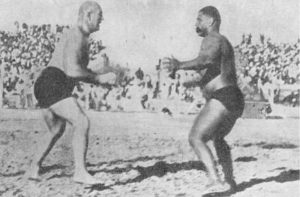 During this Europe tour, Gama defeated almost all the world’s distinguished wrestlers. Maurice Deriaz of France, Johann Lemm of Switzerland and Jesse Peterson of Sweden fell like nine pins in front of the great Gama. Many so-called champions declined his invitation to enter the ring to face him. Thus, Gama Pehalwan returned victorious from the international tour remaining unbeaten throughout.
During this Europe tour, Gama defeated almost all the world’s distinguished wrestlers. Maurice Deriaz of France, Johann Lemm of Switzerland and Jesse Peterson of Sweden fell like nine pins in front of the great Gama. Many so-called champions declined his invitation to enter the ring to face him. Thus, Gama Pehalwan returned victorious from the international tour remaining unbeaten throughout.
As Gama returned to India, he was given a hero’s welcome. Defeating the Europeans at their own den was no less an achievement than fighting for India’s independence. Gama was the World Champion but one thing that pricked him was that he could not beat the Indian champion Raheem Bakhsh Sultani Wala. Soon after his return, he challenged his idol. The bout was scheduled at Allahabad and this time nobody could prevent Gama to emerge victorious. The victory made him the Indian Champion and he eventually won the title of Rustom-e-Hind.
Gama was a champion through-and-through. He fought his last bout (though he did not think that it would be his last) in February 1929 against Jesse Petersen that lasted only one and a half minutes. After this, Gama could not find any opponent. Moreover, Indian Independence was at the threshold and so was the partition. The communal harmony was waning as differences grew between two major communities in India.
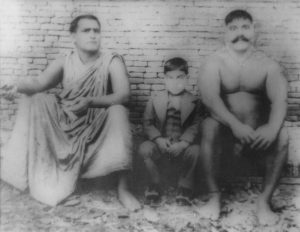 On 15th August 1947, at the stroke of midnight, India was declared independent and was partitioned too. It was a time for the Hindus to settle in India and the Muslims to be in Pakistan. Independence came with a heavy heart with hundreds and thousands leaving their homes to settle in an unknown land. The family of Gama Pehalwan also had to leave India to settle at a new home in Lahore.
On 15th August 1947, at the stroke of midnight, India was declared independent and was partitioned too. It was a time for the Hindus to settle in India and the Muslims to be in Pakistan. Independence came with a heavy heart with hundreds and thousands leaving their homes to settle in an unknown land. The family of Gama Pehalwan also had to leave India to settle at a new home in Lahore.
Gama and his relatives chose Mohni Road to settle down. It was an area where several Hindu families lived. The deluge of people crossing the border was constant; at the same time rampant ravaging of irresponsible mobs was also ongoing. Hearing about the fact that there were Hindus still staying at Mohni Road, a pro-partition group reached there.
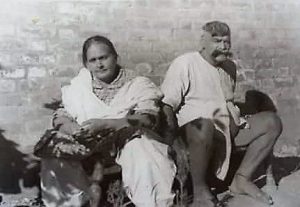 But Gama Pehalwan was there to stand against the rage. He along with his fellow wrestlers stooped the mad crowd and ensured that not a single one could touch the Hindus. But Gama understood that the place was unsafe for the Hindus and so with tears in his eyes, he took the community to the border, gave them food to last a week and bid them farewell to reach India safely.
But Gama Pehalwan was there to stand against the rage. He along with his fellow wrestlers stooped the mad crowd and ensured that not a single one could touch the Hindus. But Gama understood that the place was unsafe for the Hindus and so with tears in his eyes, he took the community to the border, gave them food to last a week and bid them farewell to reach India safely.
After settling in Lahore, Gama did not retire till 1952. But he could not find any opponent to fight with. The Great Gama met a miserable death after prolonged illness. He was given land by the Pakistan government for subsistence, but could not make ends meet. Indian industrialist GD Birla would send 2,000 rupees to Gama every month. Hearing about this, the Pakistani government also increased his pension to support him. But still he could not survive and lost his final battle on 23rd May 1960. Today, a doughnut-shaped exercise disc called Hasli weighing 95 kg, used by him for squats, is housed at the National Institute of Sports (NIS) Museum at Patiala in India. There is also a stone at the Baroda Museum weighing 1200 kg that was lifted by him on 23rd December 1902 when he came to Baroda for a competition. That stone stands tall as a souvenir of the strength that the great wrestler possessed.

